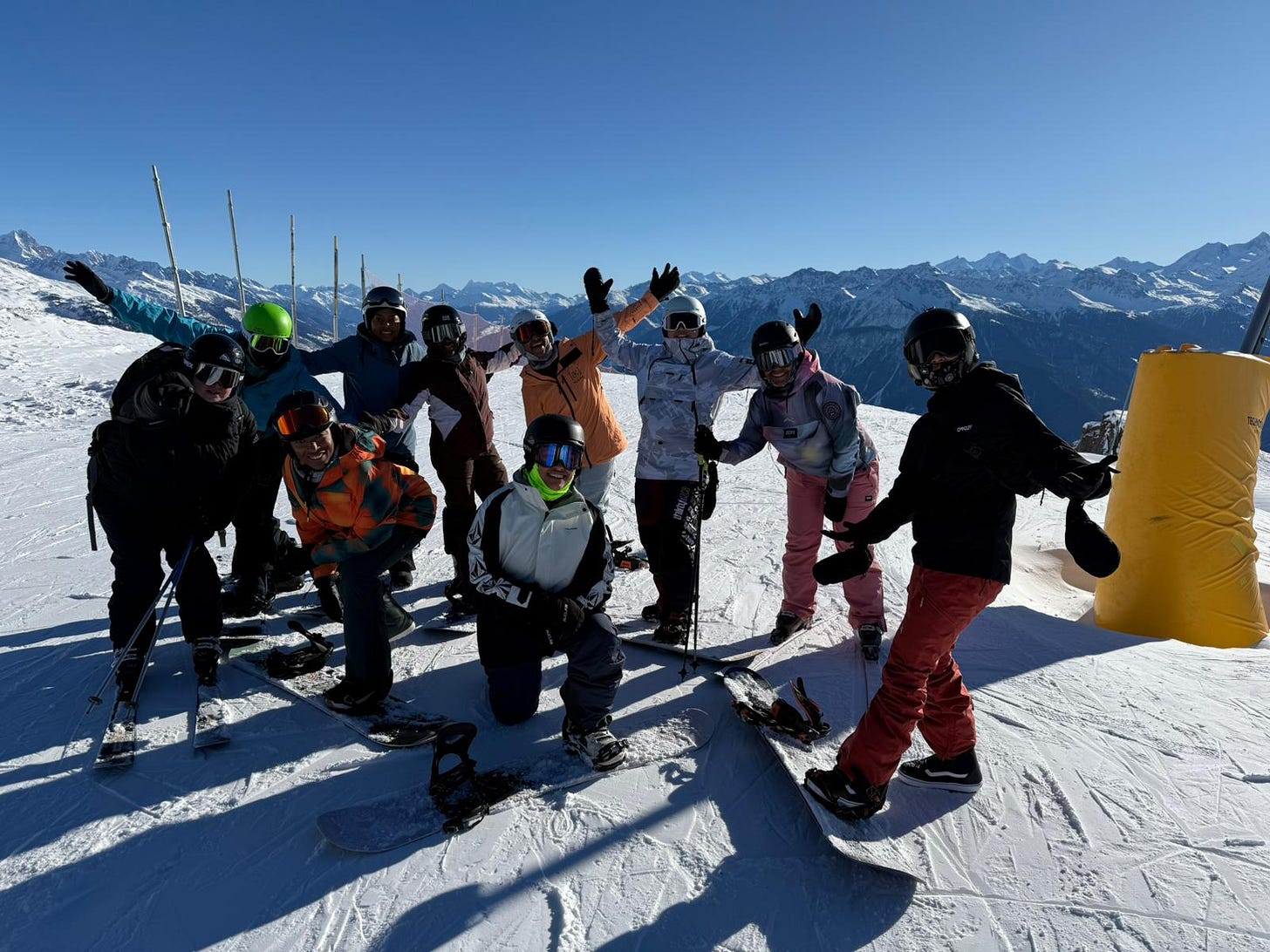Rest as a Skill, Part 1: Social Rest – Choosing Connection over Chaos
"Caring for myself is not self-indulgence, it is self-preservation, and that is an act of political warfare." – Audre Lorde
Intro: Social Rest as Resistance and Renewal
Rest, in any form, is impossible without safety. It’s the foundation that allows us to exhale, to trust, and to fully release. And on the eve of Inauguration Day—a literal turning of the page—safety feels like the cornerstone of how we move forward.
But safety requires vigilance, especially in a world that thrives on chaos. Think about how narratives are manufactured to manipulate public perception. Take TikTok, for example: a platform millions rely on for creativity and connection, suddenly positioned as both a threat and a symbol of salvation. Trump paints himself as its protector after playing a key role in its ban—a narrative as coercive as it is exhausting.


Staying vigilant against these manipulations takes a toll, especially for communities that are already disproportionately affected by instability and manufactured urgency. This is why social rest matters so much. It’s not just a retreat; it’s a refusal. A refusal to be swept up in the chaos. A refusal to let these narratives control how we connect with others or move through the world.
Right now, I’m in the Swiss Alps, surrounded by 14 Black and/or queer women—a living, breathing testament to what social rest can look like. Together, we’re carving out space for joy, for laughter, and for the safety to simply exist as we are. Social rest is about stepping toward community, toward the people and places that refill us, so we can meet new beginnings with clarity, strength, and hope.
Where We’re Headed
This is part of my Rest as a Skill series, where I’m exploring the seven types of rest. Each one offers its own way to recharge:
Physical Rest
Mental Rest
Sensory Rest
Creative Rest
Social Rest (You’re here!)
Emotional Rest
Spiritual Rest
Each post stands alone, but they all come together to show how rest is the skill we need to reclaim.
Why Social Rest Matters
Social rest helps us push back against the constant vigilance these coercive narratives demand. It creates space for connection without performance, for safety without explanation. It’s not just rest—it’s resistance.
Last night, after a long day on the slopes, we all gathered in the chalet. The room buzzed with the kind of warmth you can only find in familiarity: a few of us cackling over the retelling of a treacherous climb up the side of a slope to get to dog sledding, while others passed around a video of someone hanging off the button bar, being dragged uphill on their snowboard for night skiing. A small group huddled around a Scrabble board, throwing out words with playful intensity, while a snorer and a few puzzlers worked quietly nearby, each in their own rhythm but fully present.
The glow in the room came from the fullness of a meal shared together: toasted sesame salmon, oven-roasted potatoes with a spicy crème fraîche dip, and honey-sriracha-glazed roasted cauliflower and carrots. The space itself feels like an exhale into the hug of melodic infectious rhythms, distinctly placeable sounds from the Caribbean Islands to the townships of South Africa, a sense of what’s possible when laughter, familiarity, and safety come together.
In a world that often demands resilience from marginalized communities—especially Black, queer people—social rest is revolutionary. It’s a refusal to stay in spaces that exhaust or isolate us. It’s an act of self-preservation, not selfishness.

Take the Alps, the Duality of Social Rest
This trip has been a lesson in social rest—how it’s both spaciousness and moving into safer spaces.
Spaciousness:
On the slopes, I feel the kind of rest that comes from flow. Snowboarding demands presence and is ostensibly solo during your liminal transverse: carving turns, adjusting to the terrain, letting your body take the lead. At 7,500 feet moving at 24mph, the only thing that matters is the next movement. It’s a spaciousness that quiets the noise of everyday life, reminding me that rest isn’t always still—it can be motion filled with intention.Moving Into Safer Spaces:
The realest rest, though, has been in the community I’m here with. The Black, queer, homie vibes are a kind of sanctuary I always forget I deeply need to remain at ease and hopeful. Whether we’re hyping each other up before a run that feels absolutely outside what feels possible or sitting in comfortable silence on the gondola, there’s a safety in this space that feels like a homecoming.
Social rest isn’t just about stepping away—it’s about stepping toward people and places that refill us.
How to Cultivate Social Rest
Social rest doesn’t just happen—it’s a skill we cultivate by:
Recognizing what drains you:
Think about the spaces and relationships that leave you feeling heavy, and notice when you need to step away.Seeking safety over convenience:
Sometimes the safest spaces aren’t the easiest to access. Social rest asks us to be intentional about where and with whom we spend our energy.Balancing spaciousness and connection:
Social rest doesn’t have to mean solitude, nor does it always mean community. Sometimes, it’s about finding the right mix of both.
Are you safe enough to rest?
Rest isn’t always still. Sometimes, rest is finding refuge. My refuge this week is in the stillness and flow of carving turns and the precious, unadulterated bellowing laughter of people who see me fully. The radical power is in our resting together. Social rest reminds us that we don’t have to carry everything alone. In a world that often demands too much, choosing rest—choosing safety—is its own kind of power.
This is part of my Rest as a Skill series. Next time, we’ll explore sensory rest—how to find quiet in an overstimulating world.

